|
I finished National Novel Writing Month (whew!) and I'm ready to continue this series... A story can have a vibrant world and a brilliant plot, but it's all for naught if the characters don't act like genuine people (or elves, trolls, whatever, you get it). This blog series is about creating authentic characters who act and react realistically in fantastic and futuristic worlds. Real MotivationTo effectively and convincingly move through a fantastic world, characters need a prime motivation. This motivation should be separate from the story's plot and may even run counter to the narrative. For example, a character who wants to be a knight going on a quest to become a knight is supremely dull. Take a character who only wants to become an academic and force her into a knight's journey; Now we're cooking. I'm not saying that the plot should always run counter to a character's motivation, just that motivation needs to be exciting and can be separate from the plot. When a character is inauthentic, it's often because they either don't have any motivation or act in a way that's counter to an established prime goal. A character who is only about gaining esteem will not disrespect a superior without reason. A homeless character who needs shelter won't turn down a free night in an inn just because he doesn't follow the innkeeper's religion. Motivation as a Hierarchy 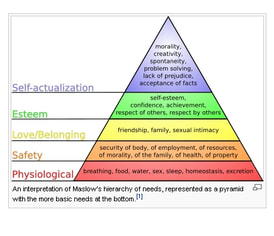 One way to choose your character's motivation is to place them on Maslow's Hierarchy of Needs chart. In Maslow's needs, motivation moves through five stages, progressively, so once the character fulfills the requirements on one step, their goals move on to the next. These stages include: The physiological need for food, shelter, sex, and similar physical needs makes up the pyramid's bottom. The next set of requirements is safety and then love and belonging. Next on the pyramid is esteem and respect. Finally, spirituality, creativity, and self-actualization drive top-tier motivations. You can see how powerful these motivations can be in driving your character forward and giving them some personal background and context in your world. For example, a character whose primary motivation is to find food is in a different place in life than someone who is looking for love and family, and both are separate from a character who is searching for spiritual meaning. Moving a character's motivation through Maslow's chart can provide character growth throughout the story arc. Maybe your character starts out as a thief who steals for food and shelter, attempting to meet needs at the base of the pyramid. With some newfound powers, the character gets all their physical and safety needs met and now wants to find love and belonging. (I realize I just gave an outline of Disney's Aladdin, but it still works as a story arc). A Note on Obsession Motivations are compelling, but note they're not obsessions, although an obsession can spur a motivation. A character who wants to find a girlfriend differs from a character who is obsessed with a certain woman. Motivation Development When you write a character, give her a primary motivation. Think about where on Maslow's hierarchy she might land. What needs they already take care of, what still should be fulfilled, and where would she like to go next, whether her journey is physical, professional, or spiritual. You can be general with your motivation; for example, maybe your character just really needs to feel safe or to find love. Or perhaps she has a specific motivation to rule a kingdom or undo a wretched curse. Other Blogs in this Series:
0 Comments
A story can have a vibrant world and a brilliant plot, but it’s all for naught if the characters don’t act like genuine people (or elves, trolls, whatever, you get it). This blog series is about creating authentic characters who act and react realistically in fantastic and futuristic worlds Crafting CredibilityCharacters in sci-fi and fantasy often have paragon attributes and powers far above the average person walking around on the street. Even an ordinary citizen in a sci-fi likely has sensational gadgets that we don’t currently have access to. So, how do we make an elf, wizard, or bionic woman seem more realistic? The best way to ensure the authenticity of any kind of figure is to craft your character, give them a set of distinguishable traits, and, and this is the most crucial part, stick to those traits. In successful science fiction or fantasy stories, the audience suspends their disbelief. For me, I’m willing to allow a writer to take me on implausible journeys to distance futures and surreal worlds. I want to believe in an alien or wizard. When a wizard or alien acts out of character or does something only to blatantly further the plot, my disbelief returns, and I’m no longer wrapped up in the story. I may even stop reading it. Hobbits Hide and Dragons Hoard 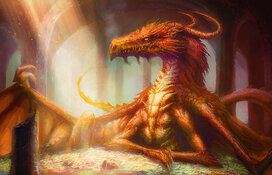 Read this exchange from J. R. R. Tolkien’s The Hobbit, between the hobbit Bilbo Baggins and the dragon Smaug: "Well, thief! I smell you, and I feel your air. I hear you breathe. Come along! Help yourself again, there is plenty and to spare!" But Bilbo was not quite so unlearned in dragon-lore as all that, and if Smaug hoped to get him to come nearer so easily, he was disappointed. "No thank you, O Smaug the Tremendous!" he replied. "I did not come for presents. I only wished to have a look at you and see if you were truly as great as tales say. I did not believe them." "Do you now?" said the dragon somewhat flattered, even though he did not believe a word of it. "Truly songs and tales fall utterly short of the reality, O Smaug the Chiefest and Greatest of Calamities," replied Bilbo. "You have nice manners for a thief and a liar," said the dragon. Bilbo is tiny and rogue. Lying isn’t beneath him, and hiding is a necessity. Here, the dragon’s natural strengths, his enormous size, and his gold hoard are detrimental because Bilbo is, by nature, adept at hiding. While both characters are tricky, neither of them fools the other. This is important. Bilbo tricking the dragon might help the plot, but you don’t get to be an ancient, wealthy dragon if you’re fooled by the first bit of flattery hurled your way. Bilbo wouldn’t go charging at the dragon to slay him. He’s a hobbit; hobbits hide. To ensure characters’ authenticity, they must have a set of distinctive attributes and a background story that plausibly gives rise to those traits. They should adapt and change throughout the story in an arc that makes sense to their history and personality. The Bilbo Baggins at the end of The Hobbit differs from the one at the end of the book, but he still has most of the same fundamental characteristics. Authenticity in Action To check for authenticity, take a few minutes and write something that your character would never do. Maybe they’d never eat meat, perhaps they’d never have children, perhaps they wouldn’t steal under any circumstances or go to bed without saying their prayers. Next, start building their backstory by writing why they’d never do it. Other Blogs in this Series: A quick note: This will be my last blog for a month, apart from my Tripping the Multiverse cover release on November 17th. I’m taking part in NaNoWriMo for November. I’m only completing half the challenge. I can’t commit to a full novel because *gestures to everything,* but I plan on completing the second half of the next book in my Jade and Antigone series. Exciting times!
A story can have a vibrant world and a brilliant plot, but it’s all for naught if the characters don’t act like genuine people (or elves, trolls, whatever, you get it). This blog series is about creating authentic characters who act and react realistically in fantastic and futuristic worlds. Writing a rough character sketch is the first step to creating a fully formed fantasy or science fiction character ready to adventure in your world. Character sketches should focus mostly on the character’s traits and personality instead of looks. It’s much easier to craft your character’s outside once you’ve figured out their insides. Plus, their physicality might change throughout your personality crafting. Maybe their backstory gives them a scar, or they belong to an order wherein everyone has purple hair. Even though looks come later, you might not want to start from a blank slate, so your character basics might include a rough age, gender, and body type. I also like to add their name, their goals, and some stand out personality traits. Stand out qualities might include friendliness, level of conscientiousness, and emotional stability (or lack of these). Sometimes, I start out with none of these, or just a name, and let the character reveal herself to me as I work through their backstory. But starting with a rough sketch often best. Here’s a checklist to help create character sketches
That’s really it for the sketch list. Keep in mind a character sketch doesn’t have to meet all these criteria and often includes other info, such as the narrative reason you’re creating the character. Next blog, I’m going to discuss a few quick tricks to make even minor characters authentic. Other Blogs in This Series:My newest novel, Tripping the Multiverse, is also the first book in my Jade and Antigone series. I discussed the main characters in a blog a while back. I have some exciting dates coming up, including a Cover Release party on November 17, and the book comes out on January 21, 2021. I thought I might write a few blogs exploring the places in Tripping the Multiverse, with the ubiquitous Orion Center as the first stop on the tour. The Orion Center’s Official Response to Press Inquiries: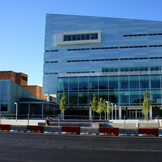 The Orion Center for Applied Quantum Physics The Orion Center for Applied Quantum Physics The Orion Center for Applied Quantum Physics is the North East’s premier research facility specializing in making particle theory particle reality. This facility boasts one of the world’s only Large Hadron Colliders. The Orion Center’s Collider is the third most powerful particle accelerator ever built. Recently, the researchers at the Orion Center have been able to isolate and stabilize two wormholes, which they are hoping to use for commercial transportation. To date, we have used the wormholes to transport multiple items across a laboratory, including a pencil, a book, and an uncooperative rabbit. You may wonder if it’s safe to be near stabilized wormholes artificially generated by particle acceleration. The answer is a resounding yes. Probably. Orion researchers report no ill effects, aside from the occasional memory loss and spontaneous transportation to random locations within a mile radius of the Center. To date, the Orion Center has only lost one researcher to unexpected transportation that we know of. The stabilized wormholes occasionally erase missing researchers from the fabric of reality. The Orion Center wormholes pose absolutely no danger to the population of Worbridge, however unexpected displacement of our entire dimension may occur. My discussion on the topic of wormhole safety will now cease. If you have questions, stop by the Orion Center. It is open to the public on alternating Tuesdays between 1:30 and 12:30pm. The Orion Center welcomes you to an almost newly renovated reception area, located to the left of the security kiosk. Refrain from drinking the coffee, it may contain antimatter. – Prepared by Director Harriet Carter Excited to see the cover of Tripping the Multiverse? Come to virtual Cover Reveal part on November 17th! Tripping the Multiverse CharactersI adapted this blog series from a section of an online workshop I conducted for Writers & Books in March 2020. The SituationDeciding a character’s alignment helps determine how they act during their adventures. I find it helpful to think about how each alignment would behave in the same circumstances because it highlights the differences between each alignment. Here’s the scene: A character is in a market and encounters a thief who has stolen from them in a previous incident. The thief doesn’t see the character yet, so they have time to react. How will they act? The neutral type would steal back precisely what the thief stole from her and continue on her way. She is not interested in payback, justice, or charity. She wants what the thief owes her, nothing more, and nothing less. That said, she will work hard to retrieve the stolen item and may not take responsibility for any mishaps caused by her pursuit. Defining Neutral Characters However, she is singular, insular, and her allegiance never changes. What makes her neutral, despite having a cause, is the singularity of her chosen cause. She cares for literally nothing else. She practically sees nothing but herself and, perhaps, the subject of her devotion. Neutral characters, also known as True Neutral, are not blank slates. They have an allegiance to something, and they are neutral to everything but that allegiance. A truly neutral character only has loyalty to themselves. But there can be neutral characters with allegiances to kingdoms, jobs, religions, or even a person. True neutral characters are few and far between. Subtypes of this character include all-knowing bystanders, hermits, self-absorbed cowards, and folks who just couldn’t be bothered. Neutral Character Development True neutral characters are hard to write and, subsequently, are rare characters. Almost everyone has some motivation aside from preservation and a moral compass outside of observation. She is also a hard type to develop because her nature is static. She doesn’t care about you, and she never will. On the other hand, she is adept at honing her skills in her area of interest, more so than different character types. If she’s interested in self-preservation via social climbing, she will eventually rise to the upper echelons of society. She has the potential to obsess her way into becoming a paragon. If she survives long enough, she could be the most peaceful monk, the world’s most powerful orator, the fastest swimmer, the highest-paid assassin, and so on. The important part is that her interest is all-encompassing. I’ve seen writers hint at true neutral development with the “maybe she cares after all” plotlines usually involving a love interest or family ties. This situation reveals that the character is not truly neutral unless her attention is a minor diversion or ends up as part of a self-serving plot. Neutral Character Examples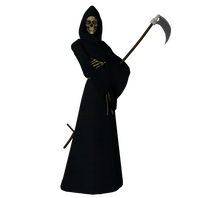 Death in the Discworld series is just there to do his job. It doesn’t matter to DEATH if you’re rich or poor, good or evil, souls need reaping, and he’s the one who will do it. Watchmen’s Doctor Manhattan is the “impartial observer” subtype of true neutral. His omniscient nature removed his humanity, and he can’t bring himself to do anything but watch from afar. Dr. Smith, from Lost in Space, both the current and previous incarnations of the character, is the classic true neutral character. Dr. Smith will do anything to survive, including manipulation, identity theft, and murder. The modern Dr. Smith is an excellent example of a neutral character who occasionally seems to take an interest in other people. Still, her concern for others always ends up a matter of self-interest. This is the last post in my Alignment Series! |
Alison Lyke
Categories
All
Archives
November 2022
|
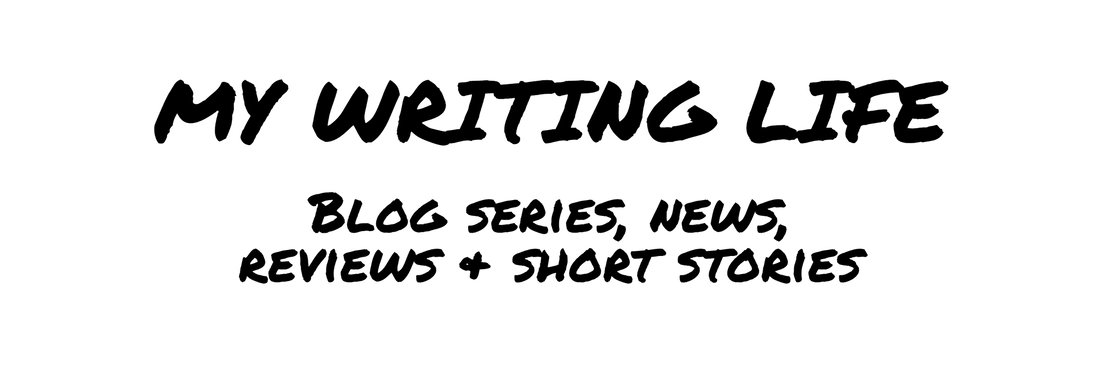
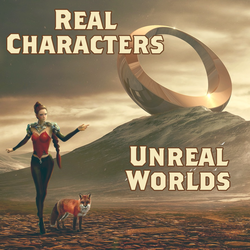
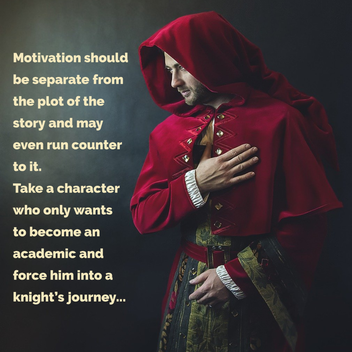
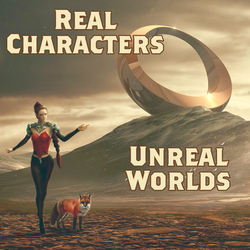
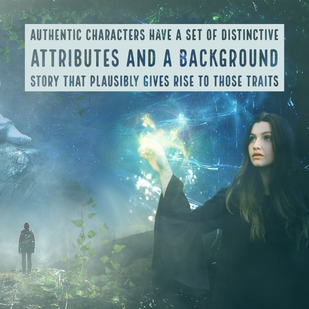
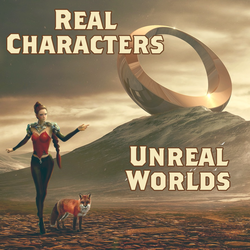
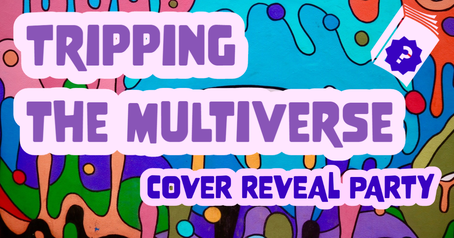
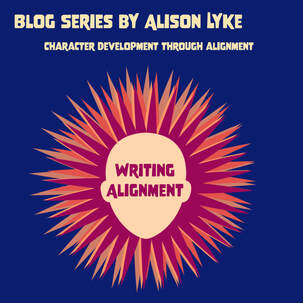

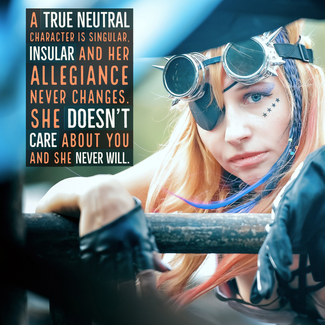
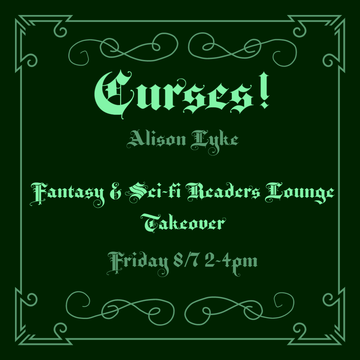

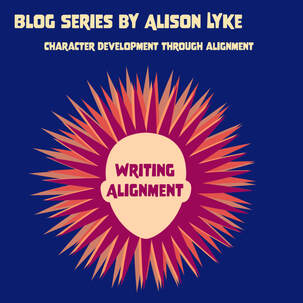
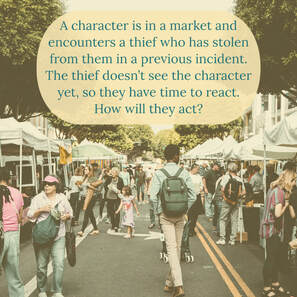
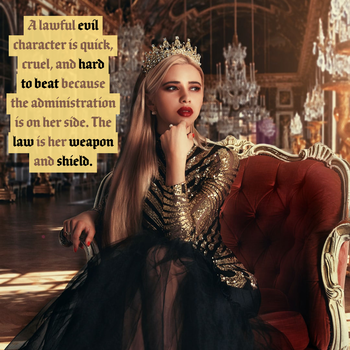
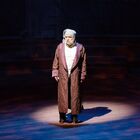
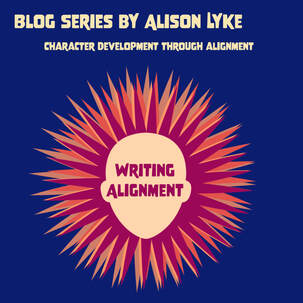
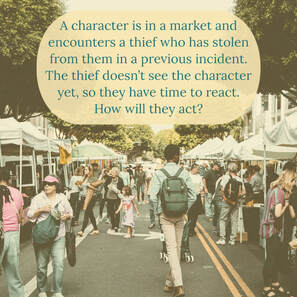
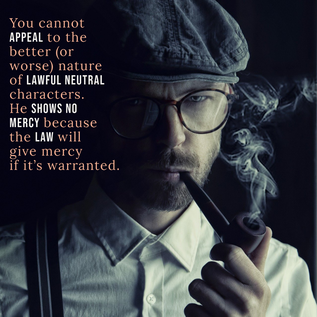
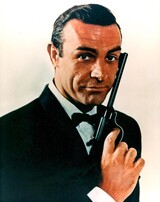
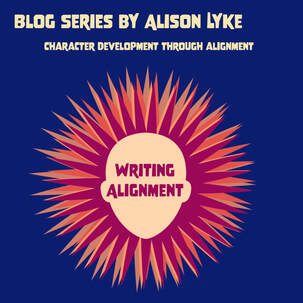
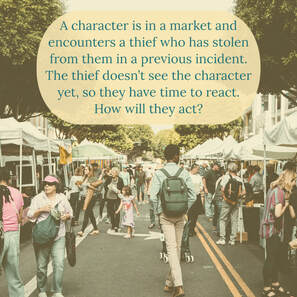
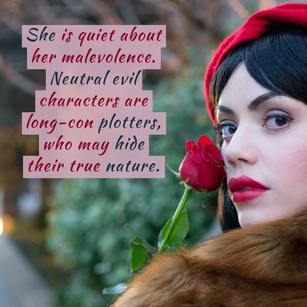
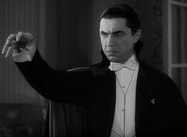
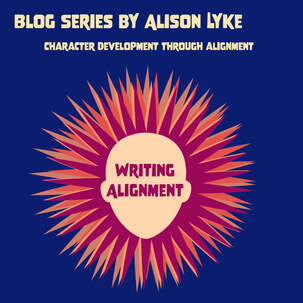
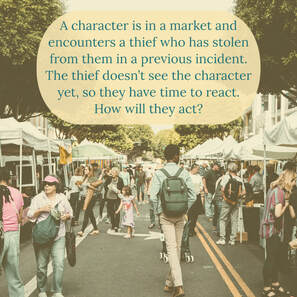
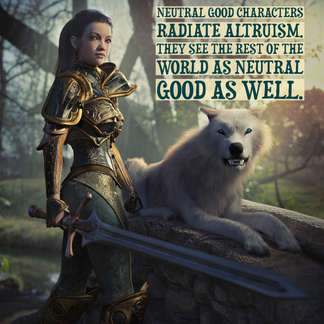
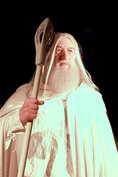
 RSS Feed
RSS Feed
